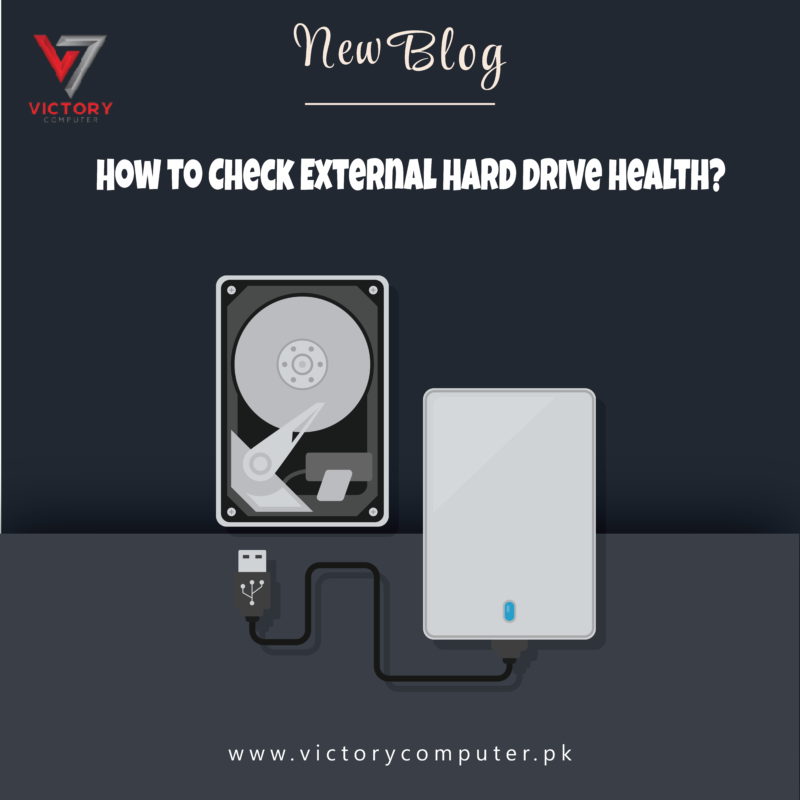
Have you ever faced a sudden external hard drive failure and lost priceless data? It’s painful, frustrating, and often expensive to recover. But the good news is — you can prevent this. Knowing how to check your external hard drive’s health can save you from disaster.
In this guide, we’ll show you simple, reliable ways to monitor your drive’s performance, catch early signs of failure, and ensure your important files stay safe.
Why Checking Hard Drive Health is Important
Hard drives — especially external ones — are vulnerable to physical damage, wear and tear, and file corruption. Whether you’re a gamer, designer, student, or office user, external storage plays a vital role in your workflow.
📁 Stores sensitive documents and personal backups
🎮 Keeps your games and media libraries safe
📸 Holds professional content and project files
However, without proper monitoring, you could lose everything in seconds.
Use CrystalDiskInfo (Free & Easy)
One of the most recommended tools to check HDD and SSD health is CrystalDiskInfo. It’s lightweight, free, and provides detailed data using SMART attributes.
Steps:
Download CrystalDiskInfo from the official website
Install and run the program
Plug in your external hard drive
Review the health status (Good, Caution, or Bad)
Key Metrics to Monitor:
Reallocated Sectors Count
Temperature
Spin Retry Count
Power-On Hours
If any values are in yellow or red, back up your data immediately.
Use Windows Built-in Tools (No Installation Needed)
Windows offers built-in utilities like CHKDSK and WMIC to diagnose and repair drive issues.
Method A: Using CHKDSK
- Open Command Prompt as Administrator
- Type:
chkdsk E: /f /r /x(ReplaceE:with your drive letter) - Press Enter
It will scan for bad sectors and repair logical errors.
Method B: Using WMIC
- Open Command Prompt
- Type:
wmic diskdrive get status - If it shows “OK,” the drive is healthy
This method is quick but may not detect deeper physical damage.
Use Hard Drive Manufacturer Tools
Most leading brands like Seagate, Western Digital, and Samsung offer free diagnostic software tailored to their drives.
Examples:
- SeaTools for Seagate
- Western Digital Dashboard for WD
- Samsung Magician for Samsung SSDs
These tools not only check health but also offer firmware updates, benchmarking, and lifetime monitoring.
🧠 Stick with the brand-specific tool for the most accurate diagnostics.
Monitor Physical Signs of Failure
Besides software checks, pay attention to physical signs that indicate your external drive is in trouble.
Common Red Flags:
- Clicking, grinding, or buzzing sounds
- Slow file transfers
- Random disconnects
- Drive not being recognized
- Frequent corruption or “Drive needs to be formatted” messages
If you spot any of these, don’t wait — back up your data immediately and run diagnostics.
Use SMART Monitoring Apps for Ongoing Health Checks
SMART (Self-Monitoring, Analysis, and Reporting Technology) is built into most drives and tracks health stats over time.
Best Apps:
- Hard Disk Sentinel (Detailed graphs & alerts)
- HDDScan (Portable and free)
- Mac users can use DriveDx
These apps offer real-time monitoring, so you’ll get notified before things go south.
Bonus Tip: Always Keep Backups
Even the healthiest drive can fail unexpectedly. That’s why the golden rule of data safety is: back up regularly.
Use:
- Cloud Storage (Google Drive, Dropbox)
- Another external drive
- NAS (Network Attached Storage) for larger setups
As a result, even if one fails, your data remains safe and accessible.
Where to Buy Reliable External Hard Drives in Pakistan
Looking to replace your old drive or buy a new one? Explore a wide range of external hard drives and SSDs at competitive prices from Victory Computers.
Do Visit Our website www.victorycomputer.pk
They stock trusted brands like:
- Seagate
- Western Digital
- Transcend
- Samsung
- SanDisk
Final Words – Don’t Wait for Disaster
Your external hard drive holds more than just files — it holds memories, work, and valuable time. By checking its health regularly, you can stay ahead of problems and avoid catastrophic data loss.
Use tools like CrystalDiskInfo, CHKDSK, and manufacturer diagnostics
Monitor physical signs and act fast
Always keep a backup plan
Now that you know how to check external hard drive health, make it a regular habit — your future self will thank you.

 Due to fluctuation in dollar/dirham rates, prices are not stable kindly confirm the price before placing the order.
Due to fluctuation in dollar/dirham rates, prices are not stable kindly confirm the price before placing the order.